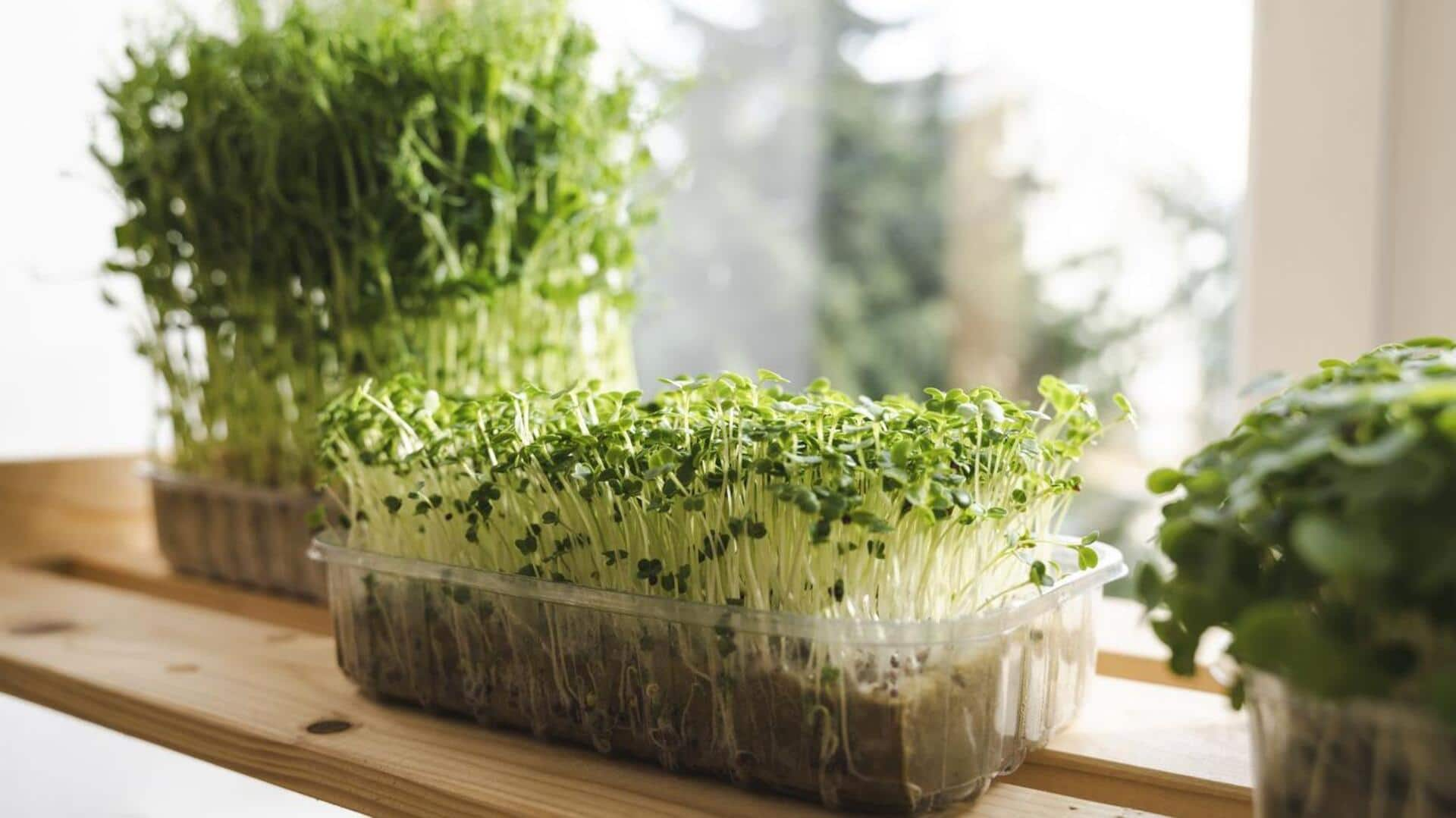
How to grow microgreens at home
What's the story
Growing microgreens at home is one of the easiest and most rewarding ways to add fresh greens to your diet. These tiny plants are nutrient-dense and can be grown in the tiniest of spaces. They're perfect for urban dwellers or anyone looking to spruce up their meals with homegrown produce. With few supplies and basic know-how, you can grow a variety of microgreens on your windowsill or kitchen counter.
Seed selection
Choosing the right seeds
Selecting the right seeds is key to successful microgreen cultivation. Some popular choices are sunflower, radish, broccoli, and pea shoots. Make sure you buy seeds specifically labeled for microgreens as they are untreated and safe for consumption. You can also experiment with different varieties to find out what flavors and textures you like the best.
Growing medium
Preparing your growing medium
A good growing medium provides support and nutrients for your microgreens. You can either use soil, coconut coir, or hydroponic mats. While soil is preferred most of the time due to its nutrient content, it also requires more cleanup than other mediums. Whatever medium you go with, make sure it is free from contaminants to promote healthy growth.
Environment setup
Setting up your growing environment
Microgreens love a warm and bright environment. Position your growing trays close to a sunny window, or use grow lights in case the natural light isn't enough. Keep the temperatures between 18 degrees Celsius-24 degrees Celsius (64 degrees Fahrenheit-75 degrees Fahrenheit) for optimal growth. Proper ventilation prevents mold growth, while ensuring the air circulation is adequate.
Watering tips
Watering techniques for healthy growth
Consistent moisture is key when growing microgreens, but avoid overwatering, as it can lead to mold issues. Use a spray bottle to mist the surface of the growing medium daily until germination occurs. Then water less frequently, as needed, based on humidity levels in your home environment.